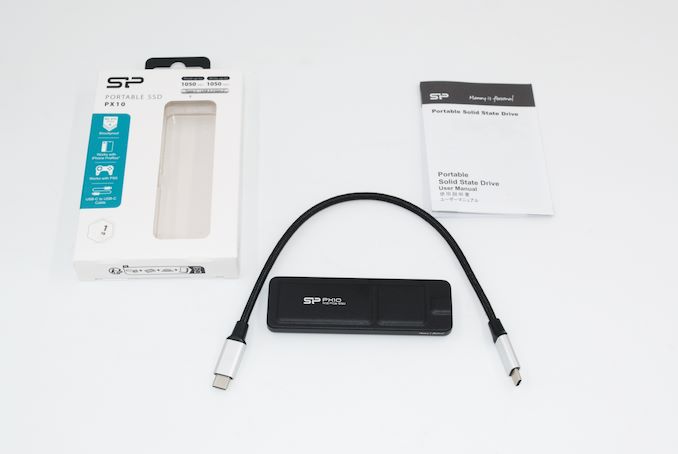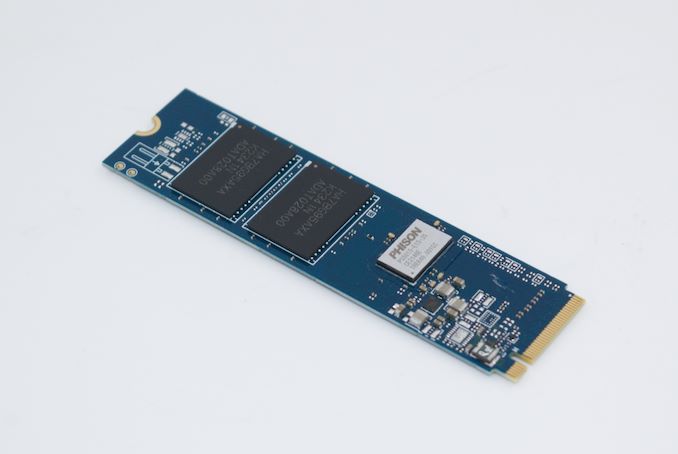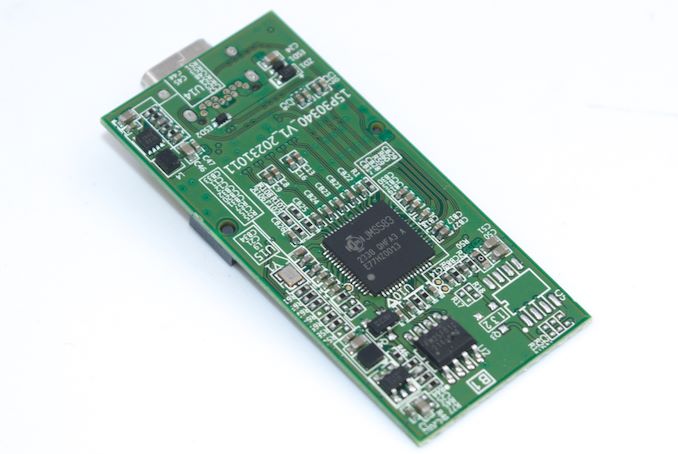Silicon Power’s product line has made its mark in the entry-level segment with aggressive pricing. In late 2023, the company launched several flash-based portable storage devices – the MS70/DS72 thumb drive with SSD-level performance (using the Phison U17 native UFD controller), and the gum-shaped PX10 portable SSD.
Aimed at power users and professionals, the PX10 offers better performance consistency compared to thumb drives, although they both fall into the 1 GBps category. Silicon Power used a traditional bridge-based design for this product, placing an M.2 2280 Gen 3 x4 NVMe SSD behind a USB 3.2 Gen 2 (10 Gbps) bridge chip.
This review details the PX10’s internals and then discusses the results of our rigorous direct-attached storage performance evaluation program. Before discussing the value proposition, we also looked at the product’s power consumption and thermal distribution.
Introduction and product impressions
Portable SSDs have experienced significant market growth, prompting chip vendors such as Phison and Silicon Motion to create single-chip native USB Flash Drive (UFD) controllers. They are used in almost all recently launched products of this type, offering convincing performance at an attractive price (saving BOM due to the lower number of chips on board) while also being highly energy efficient.
In this market situation, Silicon Power’s PX10 emerged as a bridge-based product that can reach the price point of single-chip PSSD on the market. The form factor of the PSSD reflects the chewing gum nature of the underlying M.2 2280 NVMe SSD. Silicon Power provides a nylon braided 30cm USB 3.2 Gen 2 Type-C to Type-C cable in the package.

The casing is held together by plastic pieces (the top of the PX10 is aluminum, while the bottom is polycarbonate). It can be pried open to expose the internal structure.
The case has a sleek yet sturdy feel, and the metal top and thin nature add to its appeal. Silicon Power claims that the PX10 has MIL-STD 810H (Method 516.8) certification, indicating rugged shock protection.
Silicon Power equipped the PX10 with a P34A60 M.2 2280 Gen 3 x4 NVMe SSD. Launched in late 2019, this model features a Silicon Motion SM2263XT controller and Intel 64L 3D TLC. The company is currently manufacturing these SSDs using Phison’s E15T controller and (possibly) SK hynix’s 128L 3D TLC. Our PX10 review sample used a Phison-based SSD.

The motherboard uses JMicron’s JMS583 bridge chip. This was very popular with the first wave of NVMe SSD hard drive enclosures in 2018, but ultimately resulted in new platforms starting in late 2019 that caused huge pain to consumers. JMicron eventually had to launch a new version of the chip. The PX10 uses the latest and greatest A3 chip (4th version), but this is still the 2018 generation.

The PX10 supports SMART passthrough, as shown in the CrystalDiskInfo screenshot below.
| Smart Passthrough – CrystalDiskInfo | |
 |
|
The table below provides a comparative view of the specifications of the different direct-attached storage devices featured in this review.
| Direct-attached storage device configuration comparison | ||
| aspect | ||
| downstream port | PCIe 3.0×2 | PCIe 3.0×2 |
| upstream port | USB 3.2 Gen 2 Type-C | USB 3.2 Gen 2 Type-C |
| bridge chip | JMicron JMS583 | ASMedia ASM2362 |
| strength | bus powered | bus powered |
| Use Cases | Lightweight 1GBps class portable SSD in a gum shape with a focus on style and consistency | Security-focused lightweight 1GBps portable SSD (integrated fingerprint reader) |
| physical size | 103.4mm x 33mm x 10.3mm | 85mm×57mm×8mm |
| weight | 33 grams | 58 grams |
| cable | 30cm USB 3.2 Gen 2 Type-C to Type-C | 30cm USB 3.2 Gen 2 Type-C to Type-C 30cm USB 3.2 Gen 2 Type C to Type A |
| Smart pass-through | Yes | Yes |
| UASP support | Yes | Yes |
| trim thru | Yes | Yes |
| Hardware encryption | No | Yes |
| Evaluate storage | 4x 256GB HA7BG95AXA packages (SK hynix 3D TLC?) | Samsung 92L V-NAND (5th General) |
| price | $90 | $160 |
| Comment link | Huineng PX10 1TB review | Samsung Portable SSD T7 Touch 1TB Review |
An explanation of the test bench setup and evaluation methodology is provided before looking at benchmark data, power consumption, and thermal solution effectiveness.
Test platform setup and evaluation methods
Evaluating direct-attached storage devices (including thumb drives) using the Quartz Canyon NUC (essentially a Xeon/ECC version of the Ghost Canyon NUC) configured with 2x 16GB DDR4-2667 ECC SODIMM and PCIe 3.0 x4 NVMe SSD – IM2P33E8 ADATA 1TB.

The most attractive thing about the Quartz Canyon NUC is that there are two PCIe slots for add-in cards (electrically, x16 and x4). In the absence of a discrete GPU (not required in the DAS testbed), both slots are available. In fact, we also added a spare SanDisk Extreme PRO M.2 NVMe SSD in the CPU direct-attached M.2 22110 slot on the backplane to avoid DMI bottlenecks when evaluating Thunderbolt 3 devices. This still allows the two add-in cards to run at x8 (x16 electrical) and x4 (x4 electrical). Since the Quartz Canyon NUC does not have native USB 3.2 Gen 2×2 ports, Silverstone’s SST-ECU06 add-in card is installed in the x4 slot. All non-Thunderbolt devices were tested using the Type-C port enabled by the SST-ECU06.
The specifications of the test bench are summarized in the table below:
| AnandTech DAS Testbed Configuration 2021 | |
| system | Intel Quartz Canyon NUC9vXQNX |
| CPU | Intel Xeon E-2286M |
| memory | ADATA Industrial AD4B3200716G22 32GB (2 x 16GB) DDR4-3200 ECC @ 22-22-22-52 |
| operating system driver | ADATA Industrial IM2P33E8 NVMe 1TB |
| Auxiliary drive | SanDisk Extreme PRO M.2 NVMe 3D SSD 1TB |
| add-on card | SilverStone SST-ECU06 USB 3.2 Gen 2×2 Type-C Host |
| operating system | Windows 10 Enterprise x64 (21H1) |
| Thanks to ADATA, Intel and SilverStone Tek for providing the build components | |
Test bench hardware is only one part of the evaluation. Typical direct-attached storage workloads for memory cards have also changed over the past few years. High bitrate 4K video at 60fps is already quite common, and 8K video is also starting to appear. Thanks to high-resolution textures and artwork, game installation sizes have steadily grown even on portable consoles. Keeping this in mind, our evaluation scenario for portable SSDs and UFDs involves multiple workloads, which are described in detail in the corresponding sections.
- Synthetic workload using CrystalDiskMark and ATTO
- Real-world access tracking using the PCMark 10 Storage Benchmark
- Custom robocopy workload reflecting typical DAS usage
- Sequential write stress test
In the next section, we’ll provide an overview of the Silicon Power PX10’s performance on these benchmarks. Before providing conclusions, we also made some observations on PSSD’s power consumption data and thermal solutions.